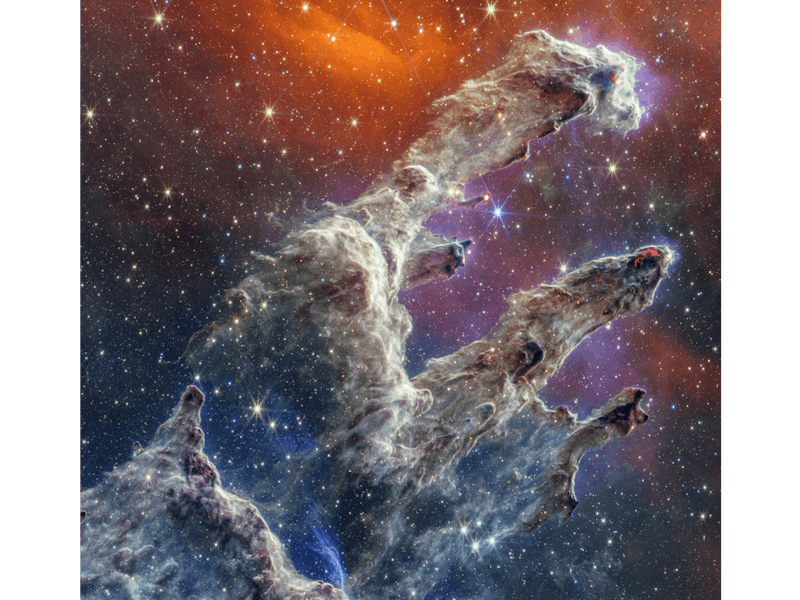Webb Telescope releases breathtaking new image of the “Pillars of Creation”
Astronomers love colors. A new “Pillars of Creation” image makes science very pretty.

What are the “Pillars of Creation” actually making?
The answer is a whole new generation of stars, gathered together like a sort of cosmic daycare, with juvenile stars of different ages and temperaments. A new image from the James Webb Space Telescope (JWST) tells this story.
The image is pleasant at first glance. It’s filled with many colors, but each hue gives important information about the area of the Eagle Nebula. They’re a product of two instruments onboard the new telescope, which scan the Universe from a stable perch roughly 1 million miles from Earth. Once in the hands of astronomers, it’s playtime.
They assign color profiles to each unique substance or object, to help the eye focus and distinguish. The color profiles are important as Webb sees in wavelengths beyond what our eyes can see. A new mosaic merges data from two unique images: a sparkling sight from Near-Infrared Camera (NIRCam) data, and the gloomy yet possessing view of observations from the Mid-Infrared Instrument (MIRI). Side by side, these two moods reveal a more complete picture.
The “Pillars of Creation” are a star-forming region located 6,500 light-years from Earth.
Orange colors correspond to diffuse dust, scattered in space. It drapes above the largest “pillar” at the top of the image. This MIRI information cannot be seen in the glittering NIRCam image. But now, this key ingredient of the star recipe appears next to the final product. The stars that shine all over the region, by contrast, are mostly invisible in the somber MIRI data.
More dust appears in indigo, on the right and against the pillars. These are the densest regions.
Some of this compact material lines the cradles of newborn stars. The most apparent is the tip of the middle pillar, near small bright-red undulations. “These young stars are estimated to be only a few hundred thousand years old, and will continue to form for millions of years,” according to an image description published Wednesday, November 30.
In late October, JWST collaborator and astrophysicist Rogier Windhorst told Inverse that the slightly older stars sweep the region with their radiation, and shape the dust into the towers seen here.
“Pillars of Creation” viewed with two JWST instruments. Left: Mid-Infrared Instrument (MIRI). Right: Near-Infrared Camera (NIRCam)
“Those are much more massive than the Sun, and they formed earlier. And it’s their blue ultraviolet radiation that over the last millions of years has shaped and excavated the shape of these pillars,” he said.
The “Pillars of Creation” first captivated the world’s attention in 1995. JWST's active predecessor, the Hubble Space Telescope, left such an impression with its image of this region that it even appeared on a U.S. postage stamp. The 2022 view likely won’t be the last time astronomers gaze into this patch of the Eagle Nebula 6,500 light-years away.
For now, the public can enjoy what Windhorst describes as the “full glory” of the pillars, and their stellar creations.